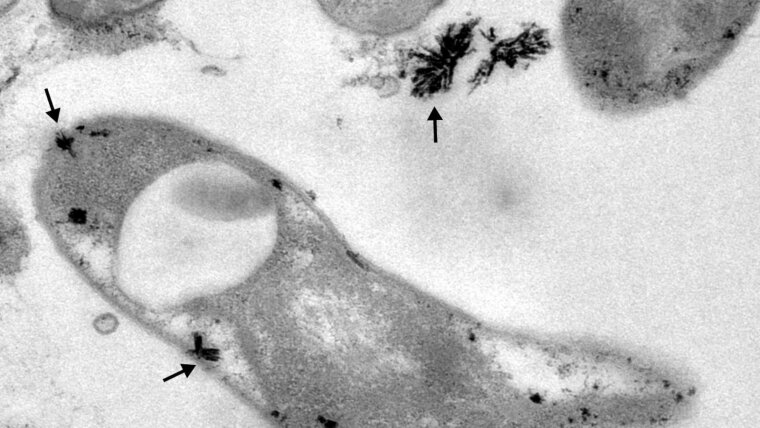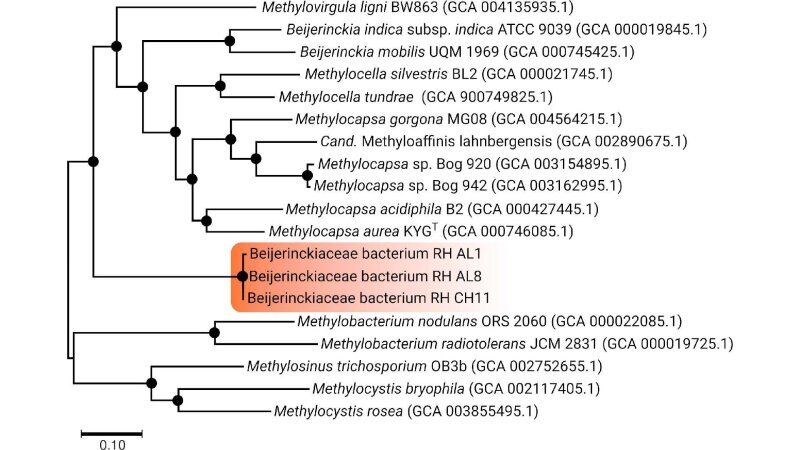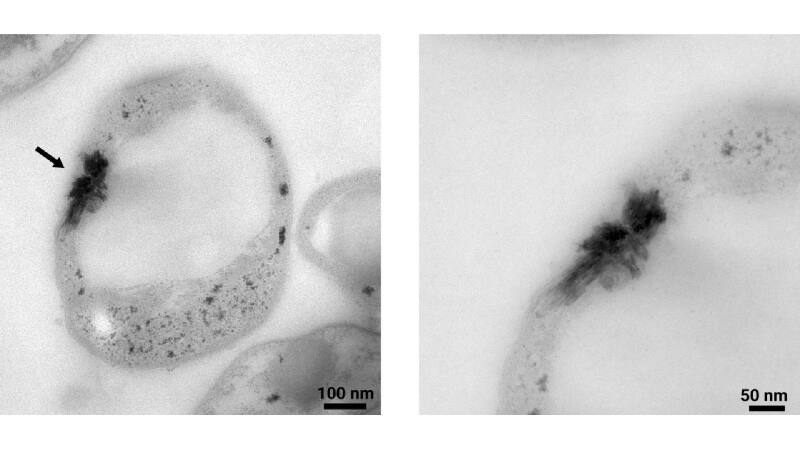
Sustainable resource use is key for the future of our planet. Lanthanides (“rare earth elements”) are considered the “vitamins” of our modern way of living. They are essential for many everyday, high-tech applications. We carry them around in our pockets, in the batteries of our smartphones, and we find (and need) them in significant quantities in any electric car. Demands are high, global production is limited and lanthanide recycling is only in its infancy.
Lanthanides are also “life metals”, they are physiologically relevant in methylotrophs (bacteria that use C1-compounds such as methane and methanol as carbon and energy source). Taking into account the ecological role of methylotrophs as sink for diverse C1-compounds, lanthanides are of importance with respect to microbial carbon cycling. Understanding microbial lanthanide utilization is a door-opener for bioinspired recycling strategies and moving towards a circular economy.
Beijerinckiaceae bacterium RH AL 1 forms, together with its siblings, a new genus-level group within the metabolically diverse Beijerinckiaceae. The shown phylogenomic tree is based on the core genome of the Beijerinckiaceae. The scale bar indicates amino acid substitutions. Adapted from Wegner et al., 2020 (https://doi.org/10.1128/AEM.01830-19).
Image: Carl-Eric WegnerResearch dedicated to lanthanide-dependent metabolism is severely limited to a few model organisms that do not adequately cover the taxonomic and expected functional diversity of microbes utilizing lanthanides. We are using a recently characterized lanthanide-dependent methylotroph of the family Beijerinckiaceae, strain RH AL1, to win a more comprehensive understanding about lanthanide-dependent metabolism. We are especially interested in lanthanide sensing, discrimination, uptake, and storage, as well as functional roles beyond methylotrophy.
Strain RH AL1 accumulates lanthanides intracellularly and is presumably able to take them up selectively. The electron microscopy image above shows an exemplary lanthanide deposit with two different magnifications. Adapted from Wegner et al., 2021 (https://doi.org/10.1128/AEM.03144-20)
Image: Carl-Eric WegnerRecording freeze-fracture transmission electron micrographs while tilting specimens allowed us to show that lanthanides are not stored in the cytoplasm but only in the periplasm. Taken from Wegner et al., 2021.
Video: Carl-Eric WegnerMore information about my research can be found on my personal homepage: www.exploringmicrobes.deExternal link

